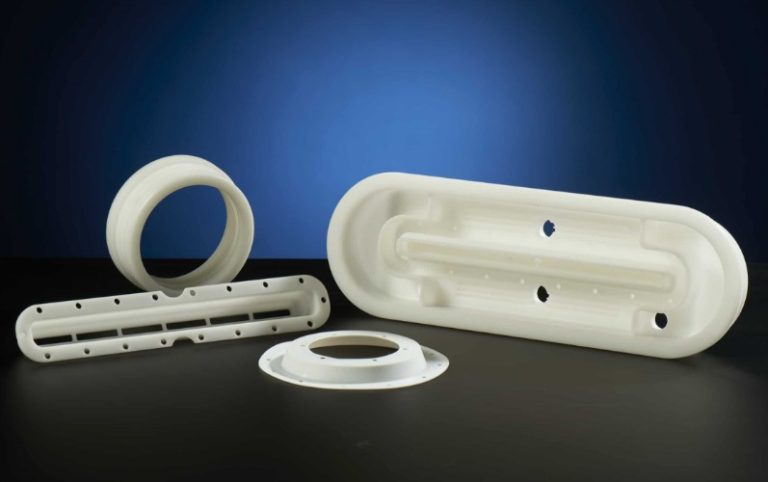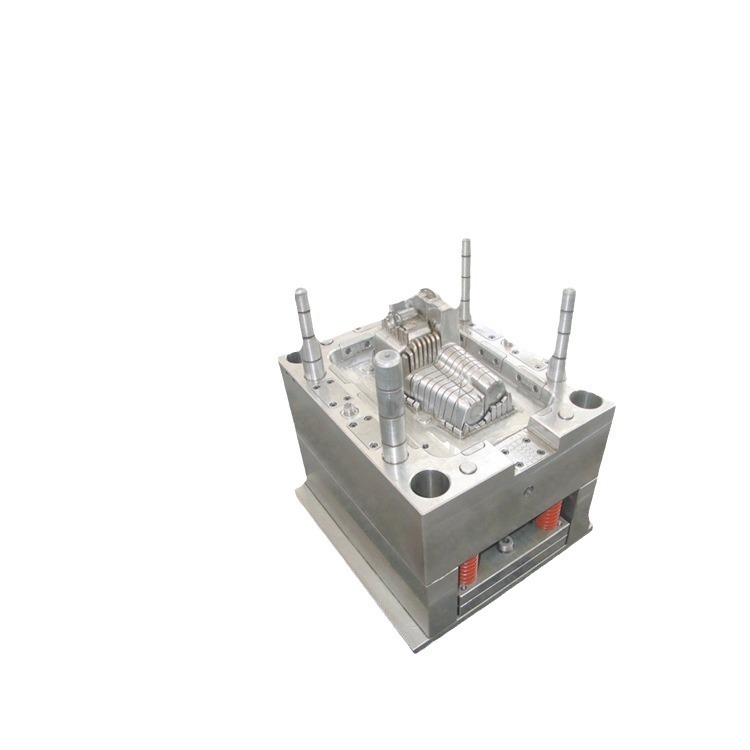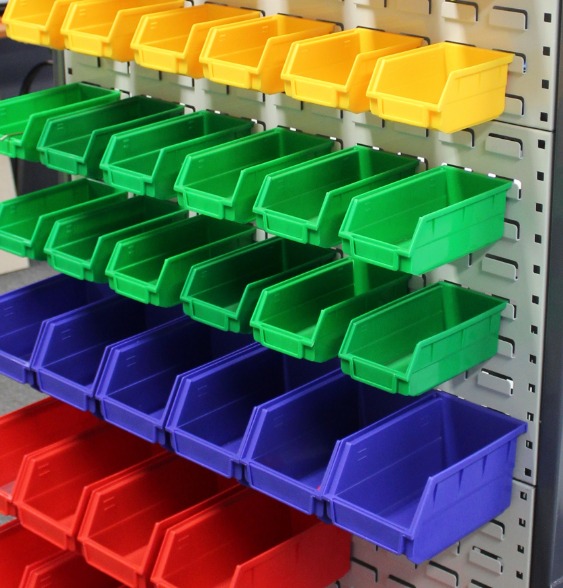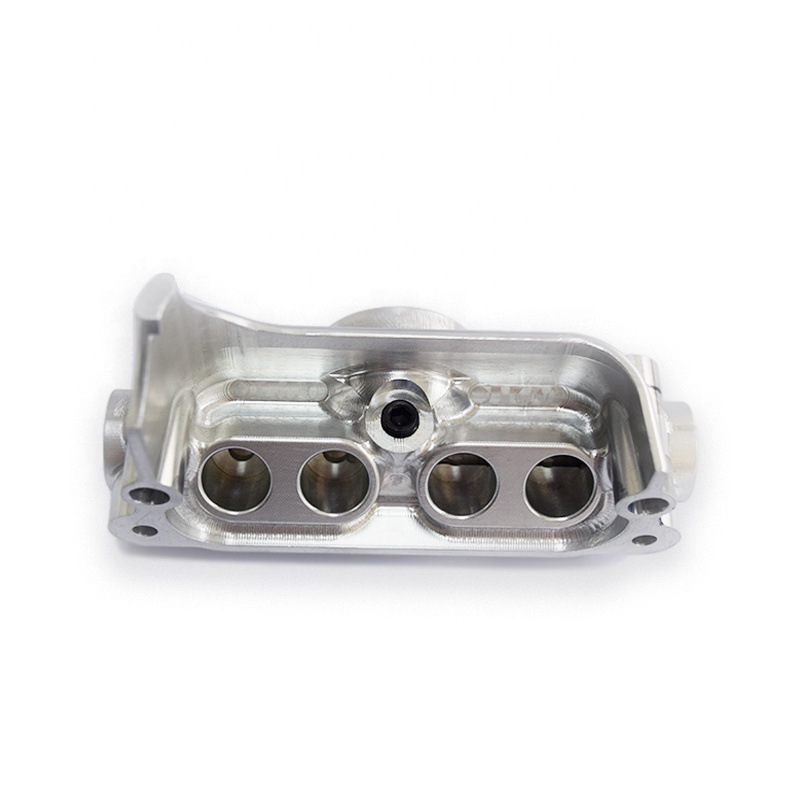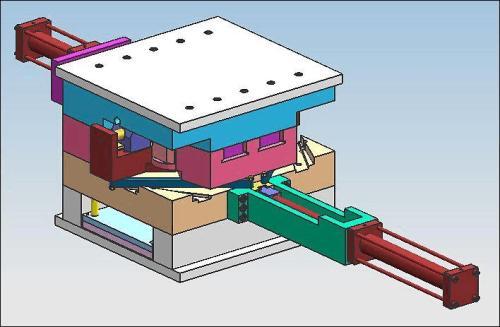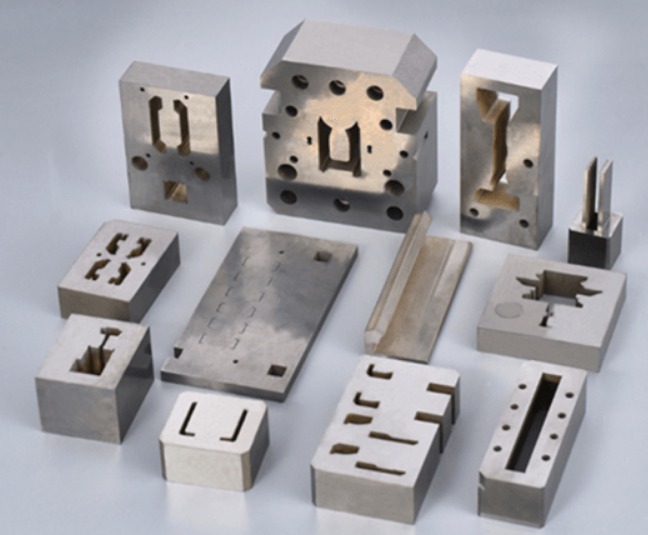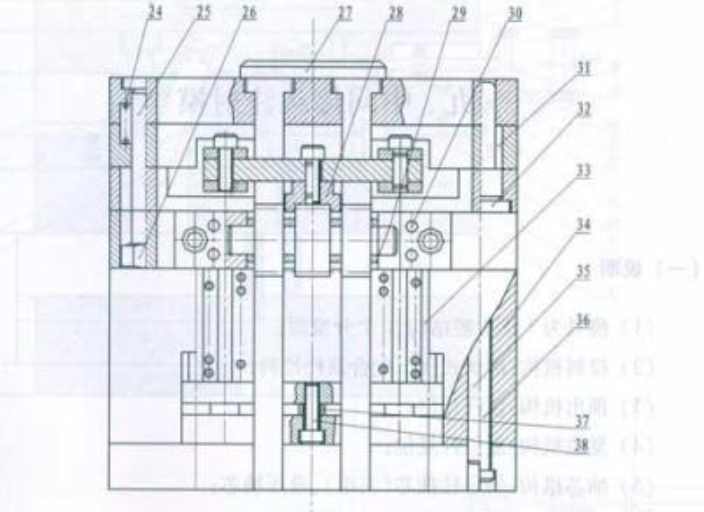Introduction
In the world of manufacturing, injection moulds stand as the cornerstone of plastic product production. These molds play a pivotal role in transforming raw plastic materials into a vast array of items we use daily, from the tiniest components in electronic devices to large automotive parts. Their importance lies in their ability to produce high - volume, high - precision plastic products efficiently.
Types of Injection Moulds
Two - Plate Mould
Structure and Working Principle
A two - plate mould is one of the most basic and common types of injection moulds. It consists of two main parts: the fixed mould (also known as the stationary mould or the A - plate) and the moving mould (the movable mould or the B - plate). When the injection moulding process begins, the two plates close together. The molten plastic is injected into the cavity formed between the two plates through a sprue, runner, and gate system. Once the cavity is filled, the plastic cools and solidifies. Then, the mould opens, separating the two plates, and the finished plastic part, along with the runner and gate system (which are also solidified), are ejected from the moving mould side.
Advantages and Disadvantages
One of the significant advantages of a two - plate mould is its simplicity. With fewer components compared to other mould types, it is relatively easy to design, manufacture, and maintain, resulting in lower production costs. This simplicity also contributes to a shorter cycle time, making it suitable for high - volume production. Additionally, the two - plate mould can handle a wide range of plastic materials and product sizes. However, it has some drawbacks. The most notable is the presence of a relatively large and visible gate mark on the product, which can be a cosmetic issue for products with high - quality appearance requirements. Moreover, since the runner and gate system solidify with each cycle, there is a significant amount of waste material that needs to be recycled or discarded, increasing material costs in the long run.
Application Scenarios
Two - plate moulds are well - suited for products with simple structures and where appearance is not a critical factor. For example, in the production of common plastic containers like buckets or storage bins, the large gate mark and waste material are acceptable due to the functional nature of the product. Toys with basic shapes and designs also often use two - plate moulds for their cost - effective and high - volume production capabilities.
Three - Plate Mould
Structure and Working Principle
A three - plate mould, as the name implies, has an additional plate compared to the two - plate mould. It consists of a fixed plate (the stationary plate), a middle plate (also known as the runner plate or the stripper plate), and a moving plate (the movable plate). When the mould opens, the fixed plate and the middle plate separate first, which causes the sprue and runner system to be separated from the product. Then, as the mould continues to open, the middle plate and the moving plate separate, allowing the product to be ejected from the moving plate. This unique structure enables the automatic separation of the gate from the product during the opening process.
Advantages and Disadvantages
The three - plate mould offers several advantages. It provides greater flexibility in gate location, allowing for more precise control over the filling of the mould cavity. This is especially useful for complex - shaped products. It can also achieve multi - point gating, which helps to evenly distribute the plastic melt in the cavity, reducing the risk of flow - related defects such as weld lines. Another advantage is that it generates less runner waste compared to the two - plate mould, as the runner system can be designed to be more efficient. However, the complexity of the three - plate mould comes with a price. It is more difficult and expensive to design and manufacture due to the additional plate and the need for precise control of the opening sequence. The longer cycle time is also a drawback, as the additional separation step during opening increases the overall production time.
Application Scenarios
Three - plate moulds are commonly used for products that require high - quality appearance and have complex geometries. In the production of precision electronic product housings, such as those for smartphones or tablets, the ability to place the gate in an inconspicuous location and achieve uniform filling is crucial. Optical instrument components also benefit from the multi - point gating and precise control offered by three - plate moulds to ensure high - quality optical properties.
Hot Runner Mould
Structure and Working Principle
A hot runner mould features a hot runner system, which is designed to keep the plastic in a molten state throughout the injection process. Instead of a traditional cold runner system where the plastic in the runner solidifies after each injection cycle, the hot runner system uses heaters and insulated channels to maintain the plastic at a suitable temperature. Molten plastic is directly injected from the hot runner system into the mould cavity through nozzles. This eliminates the need to remove and recycle solidified runner material after each cycle.
Advantages and Disadvantages
The hot runner mould has several significant advantages. Firstly, it saves a substantial amount of raw material by eliminating runner waste, which is especially beneficial when using expensive plastic materials. Secondly, it can improve the quality of the final product. Since the plastic is in a more consistent molten state when entering the cavity, it reduces the occurrence of defects such as flow marks and weld lines. The process also allows for a shorter cycle time as there is no need to wait for the runner to cool and solidify. However, the initial investment in a hot runner mould is high. The hot runner system itself is complex and expensive, and it requires a more precise temperature control system. Maintenance can also be more challenging, as any malfunction in the heating or nozzle system can lead to production stoppages.
Application Scenarios
Hot runner moulds are ideal for high - volume production of products with strict quality and appearance requirements. In the automotive industry, for example, the production of interior trim parts such as dashboards and door panels often uses hot runner moulds. High - end home appliance housings also benefit from the advantages of hot runner moulds, ensuring a smooth and defect - free surface finish.
Gas - Assisted Injection Mould
Structure and Working Principle
A gas - assisted injection mould has a system that allows for the injection of high - pressure gas (usually nitrogen) into the mould cavity during the injection process. After the initial injection of molten plastic, the gas is introduced. The gas pushes the plastic to fill the remaining parts of the cavity, creating a hollow structure in the product. This is achieved by injecting the gas through special gas nozzles located in the mould. The gas pressure helps to distribute the plastic evenly and reduces the need for high injection pressures, which can cause problems like excessive stress in the product.
Advantages and Disadvantages
The main advantages of gas - assisted injection moulding are its ability to reduce product warpage and improve product strength. By creating a hollow structure, the product can have a more uniform distribution of material, which minimizes the risk of warping during cooling. The hollow structure also reduces the weight of the product, which is beneficial for applications where weight reduction is important, such as in the automotive industry. Additionally, since the gas helps to fill the cavity, the product can have a reduced wall thickness, saving raw material. However, the equipment required for gas - assisted injection is complex and expensive. The process also requires careful control of gas pressure and injection timing, which can be challenging to master. Any deviation in the process parameters can lead to defects such as gas voids or uneven wall thickness.
Application Scenarios
This type of mould is commonly used for large - scale, thin - walled, and complex - shaped plastic products. In the automotive industry, car bumpers are often produced using gas - assisted injection moulding. Furniture components, such as large - sized plastic chair seats, also benefit from the weight - reduction and strength - improvement advantages of this process. Large containers for industrial or household use are another example of products that can be effectively produced with gas - assisted injection moulds.
Multi - Component Injection Mould
Structure and Working Principle
A multi - component injection mould is equipped with multiple injection units. Each injection unit is capable of injecting a different type of plastic material. During the injection process, these different plastic materials can be injected into the mould cavity either sequentially or simultaneously. This allows for the creation of complex products that combine the properties of different plastics. For example, in a single product, one part can be made of a hard plastic for structural support, while another part can be made of a soft plastic for a comfortable grip or cushioning effect.
Advantages and Disadvantages
The multi - component injection mould offers the advantage of creating products with enhanced functionality. By combining different materials, manufacturers can create products that have unique properties, such as a combination of hardness and softness, or different colors and textures. This can significantly increase the product's value in the market. However, the mould itself is highly complex, which makes it expensive to design and manufacture. The production process also requires careful coordination of the multiple injection units, which can be technically challenging. Any misalignment or incorrect timing in the injection of different materials can lead to product defects.
Application Scenarios
Multi - component injection moulds are used in a wide range of products that require the combination of different material properties. In the consumer electronics industry, mobile phone cases are often made using this technology, combining a hard outer shell for protection and a soft inner layer for shock absorption. In the automotive industry, car steering wheels are a common example, where different materials are combined to provide a comfortable grip and a durable structure.
Comparison of Injection Mould Types
Tabular Comparison
To better understand the differences between various injection mould types, the following table provides a comprehensive comparison based on several key aspects:
| Mould Type | Cost | Structural Complexity | 成型效率 | 制品质量 | 适用产品类型 |
| Two - Plate Mould | Low - relatively simple structure, less manufacturing cost | Low - basic structure with two plates | High - short cycle time due to simplicity | Moderate - visible gate mark, more runner waste affects quality | Simple - structured products, common plastic containers, basic - shaped toys |
| Three - Plate Mould | High - complex structure with an additional plate | High - additional plate and complex opening sequence | Moderate - longer cycle time due to extra separation step | High - flexible gate location, reduces flow - related defects | Complex - shaped products with high - quality appearance requirements, precision electronic product housings, optical instrument components |
| Hot Runner Mould | High - expensive hot runner system and precise temperature control system | Moderate - mainly the complexity of the hot runner system | High - short cycle time, no need to wait for runner to cool | High - consistent molten plastic reduces defects | High - volume production of high - quality products, automotive interior trim parts, high - end home appliance housings |
| Gas - Assisted Injection Mould | High - complex gas - injection equipment | High - need for gas - injection system and precise process control | Moderate - requires careful process control which may affect cycle time | High - reduces warpage and improves strength, can reduce wall thickness | Large - scale, thin - walled, and complex - shaped products, car bumpers, furniture components, large containers |
| Multi - Component Injection Mould | Very High - multiple injection units and complex coordination | Very High - multiple injection units and complex material injection control | Low - requires careful coordination of multiple injection units, easy to cause defects if not well - controlled | High - can combine different materials to enhance product functionality | Products requiring combination of different material properties, mobile phone cases, car steering wheels |
When to Choose Which Type
The choice of injection mould type depends on several factors:
- Production Volume:
- For high - volume production, two - plate moulds, hot runner moulds are good choices. Two - plate moulds offer a short cycle time, while hot runner moulds save material and also have a relatively short cycle time, which can significantly reduce the cost per unit in large - scale production.
- If the production volume is low, the high cost of complex moulds like three - plate moulds, multi - component injection moulds may not be cost - effective. In this case, a two - plate mould can be a more affordable option even though it may have some waste.
- Product Precision:
- When high precision is required, such as in the production of optical components or precision electronic parts, three - plate moulds and hot runner moulds are preferred. Three - plate moulds allow for precise gate location and multi - point gating, while hot runner moulds ensure a more consistent molten plastic flow, reducing defects that could affect precision.
- For products with lower precision requirements, two - plate moulds can be used as they are more cost - effective.
- Cost Budget:
- If the budget is limited, two - plate moulds are the most economical option. They have a simple structure, which results in lower manufacturing and maintenance costs.
- For projects with a higher budget, more complex moulds like multi - component injection moulds or hot runner moulds can be considered to achieve better product performance and quality.
- Material Characteristics:
- When using expensive plastic materials, hot runner moulds are ideal as they minimize runner waste. For example, when processing high - performance engineering plastics, the cost savings from reducing runner waste can be substantial.
- Some materials may require special mould types for proper filling and cooling. For instance, materials with high viscosity may benefit from gas - assisted injection moulds to ensure complete filling of the cavity.
Yigu Technology's Perspective
As a non - standard plastic metal products custom supplier, Yigu Technology understands the significance of choosing the right injection mould type. Every customer's requirement is unique, and the product characteristics vary widely. We emphasize the importance of custom - tailored mould solutions. By closely collaborating with our clients, we analyze their product designs, production volumes, and quality expectations to determine the most suitable injection mould type.
Our team of experienced engineers has in - depth knowledge of different mould structures and working principles. We are proficient in designing and manufacturing all types of injection moulds, from the simple two - plate moulds to the highly complex multi - component injection moulds. With advanced manufacturing equipment and strict quality control processes, we ensure that each mould we produce meets the highest standards of precision and durability. Whether it's a small - scale production run or a large - scale mass production project, Yigu Technology is committed to providing the best injection mould solutions to help our clients achieve their production goals efficiently and cost - effectively.
